John and Janell Quigley live in Huntington Beach, California. When John is not making his daily stops at industrial and automotive shops in his Cornwell Tools truck, he can be seen cruisin’ nearby Pacific Coast Highway in his ’56 Chevy Bel Air 4-door. That’s right a four-door.
The norm for hot rods, customs, classics and muscle cars has been a 2-door models. Four-doors have been stereotyped as a family or old folks car. But, if a 4-door is built with the same intentions as a cool 2-door, it can be cool too. And that’s what John set out to do. Let’s see how he accomplished his mission.
Ever since he was a little kid, cars were John’s passion, and for practically all his life he’s been part of the custom car scene. Given his love of cars, over the years, he has built a number of very cool custom rides out of his garage. His latest creation is this ’56 Chevy Bel Air 4-door sedan. This car has an eye-catching two-tone Crocus Yellow and Black paint scheme.
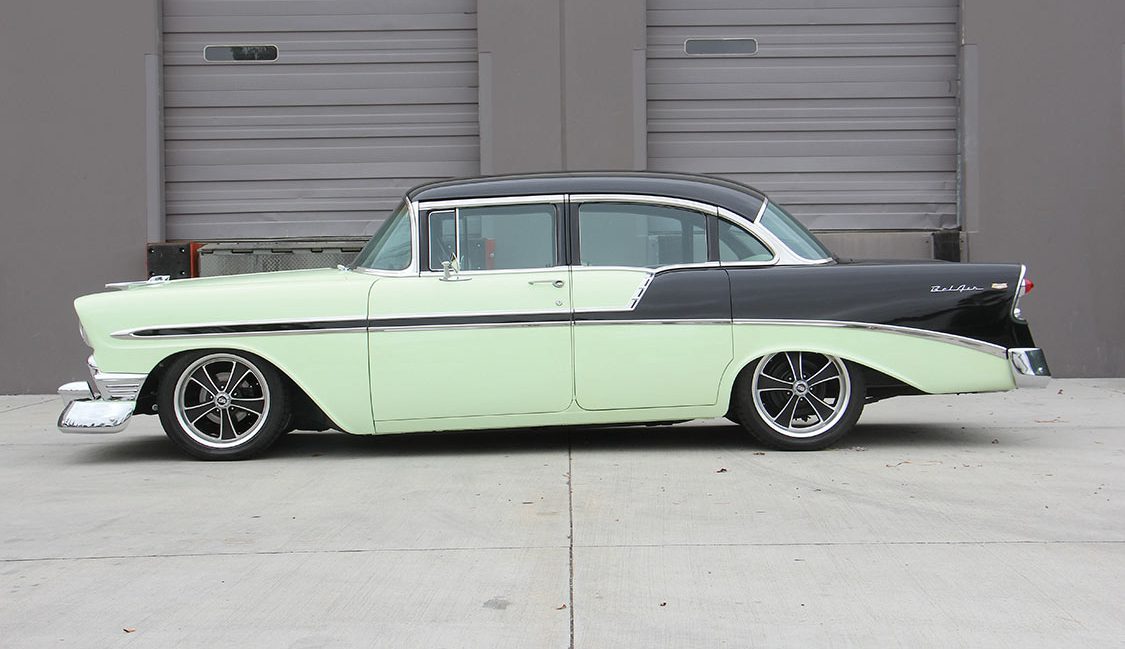
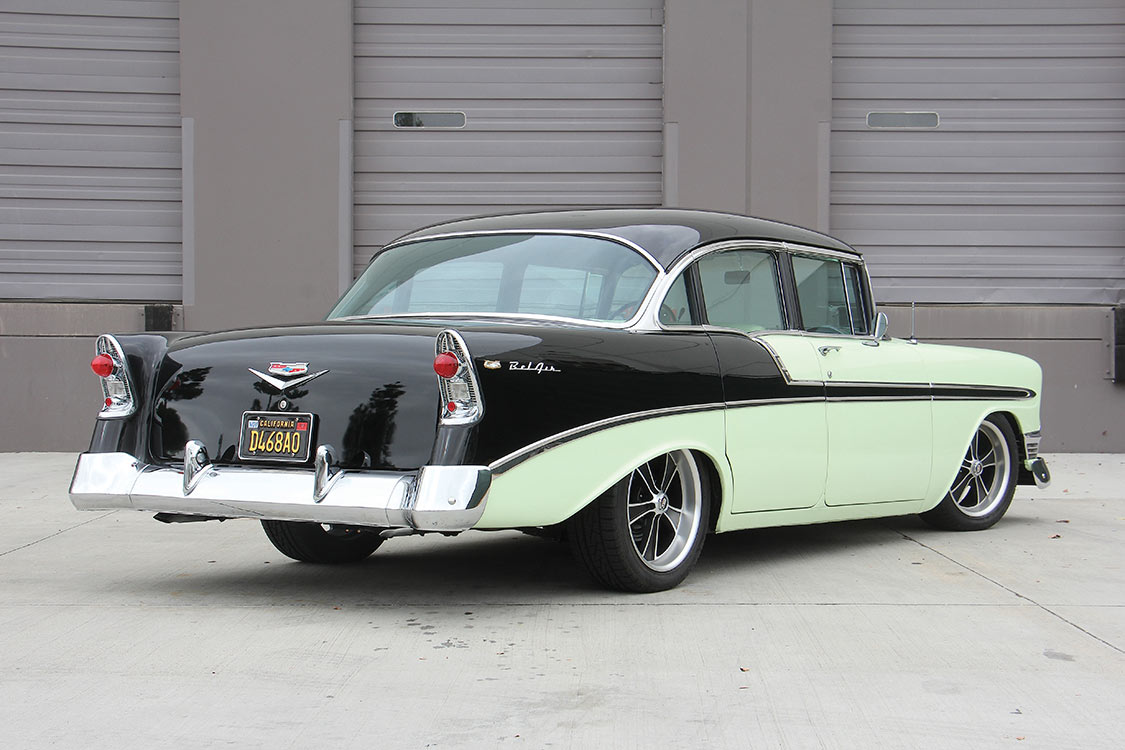
Here is the short version of the car’s timeline. In 1956, this car was bought new from Capital Chevrolet in Salt Lake City, Utah. For the next 20 years, it was driven very little around Salt Lake City.
In 1976, the car was taken away from the elderly gentleman by his daughter. He was bumping into too many objects, becoming a danger to himself and others. It was parked in the family barn with 86,000 original miles on the odometer. In 2010 a potential buyer discovered it stashed away in the barn.
He purchased this treasure from the original owner’s daughter. The buyer intended to restore the Bel Air. He rebuilt the factory 265 ci V8 engine and refurbished the drum brakes to get it road worthy. After losing his ambition, the car was put on e-Bay. That’s when John found it, noticing it was in very good condition. He was able to see beyond the ugly ‘70s Earl Schieb green paint job.
Always being one to build weird stuff, John thought to himself how he could make this ’56 Bel Air 4-door cool? After pondering, a vision came to him, John made a bid of $5,500.00 on e-bay. His bid was unchallenged and the 4-door was his. After taking delivery, John drove it around the block a couple of times and it performed to his satisfaction. It was then parked inside his two-car garage.
Starting the very next day, the challenge of making this 4-door cool ride was on. John took four-years creating this unique custom build. He began by carefully disassembling, bagging, labeling, and sorting parts and pieces. All of the body and window stainless molding was straightened, massaged and then polished by John.
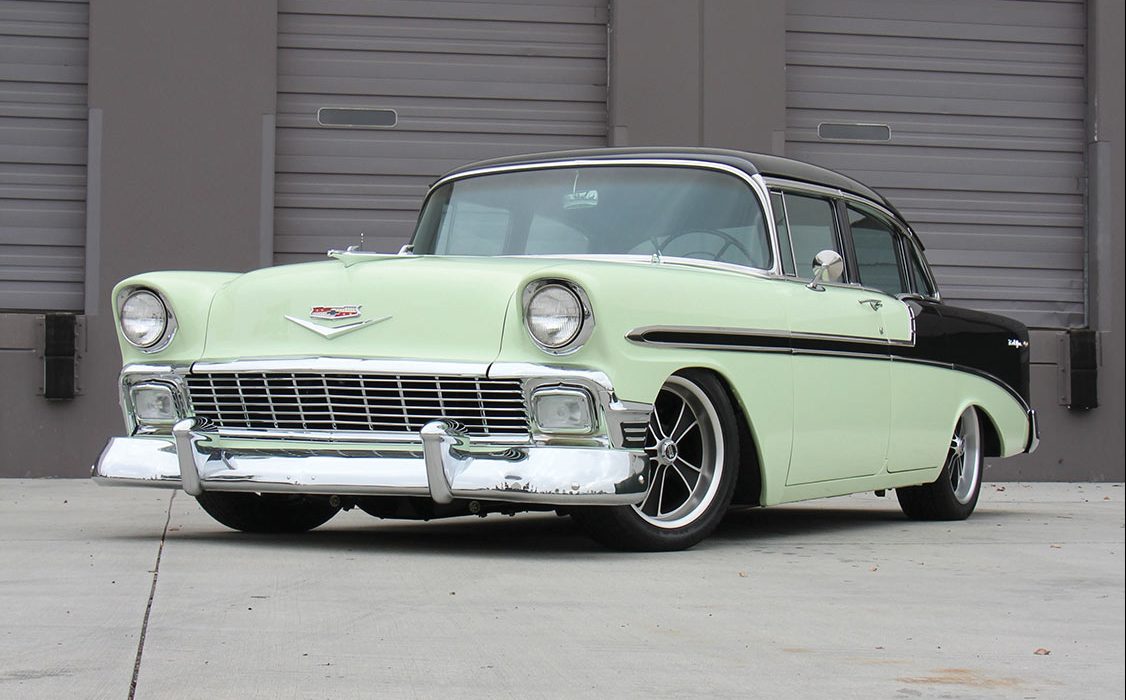
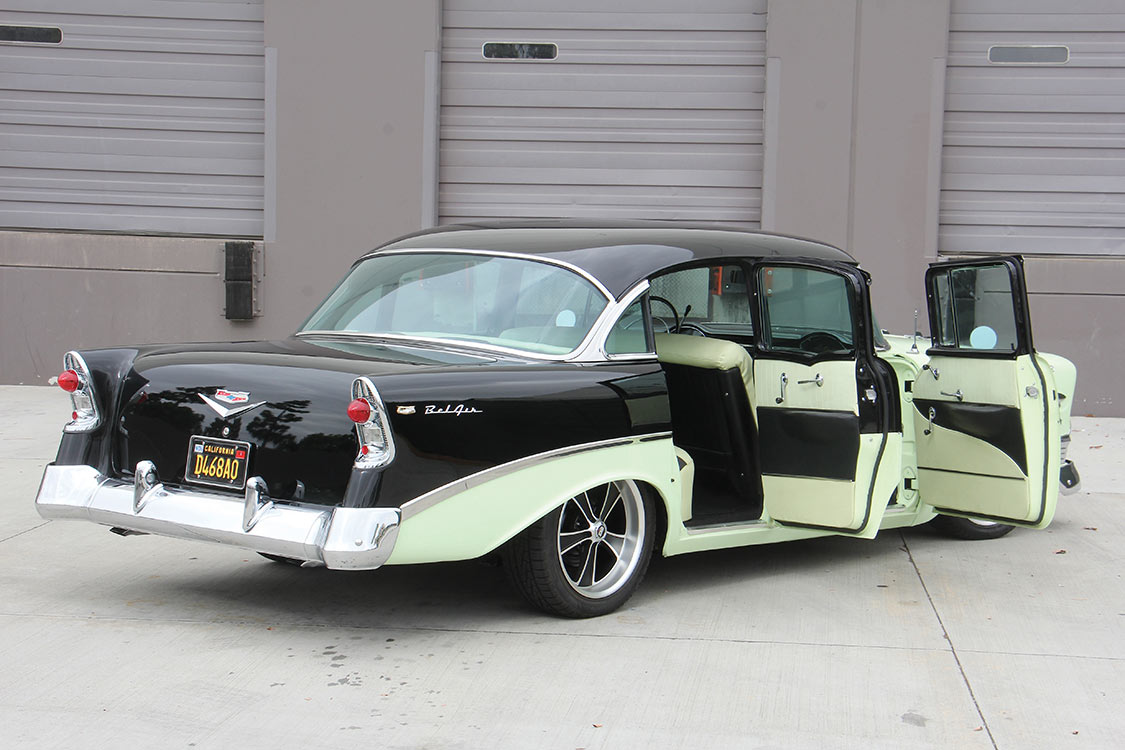
To achieve the proper ride height up front, two pairs of Global-West upper and lower control arms were bolted to the front suspension pickup points. A pair of two-inch drop spindles were sandwiched between the control arms.
To achieve an even lower stance up front, John purchased a pair of CPP two-inch lowering springs that were even cut two-inches more making the nose have a six-inch drop. To dampen and control the front shock frequencies a pair of KYB gas filled shocks were installed.
A pair of American Brake & Steering (ABS) Performance front disc brakes with 11-inch rotors and dual piston calipers were installed. To distribute the proper braking performance both front and rear, an ABS master cylinder and power booster were installed and plumbed by John.
The Bel Air’s rear suspension was altered by installing a pair of Car Shop two-inch lowering leaf springs. With still to much of a rake, a pair of Speedway Motors three-inch and one-inch lowering blocks were installed under the rear axle housing to achieve a slight forward raked stance. Just like in the front, a pair of KYB gas filled shocks dampened the rear suspension contributing to the Bel Air’s superior ride quality. A pair of completely rebuilt standard factory drum brakes supplied ample braking in the rear. Just as important as the stance was the wheel and tire combination.
Up front John added a pair of Rev 106 Classics, black with machined aluminum face wheels 17×7 with 4.0 backspacing consumed in a pair of Sumitomo HTR A/S P02 215/50R-17. Out back a pair of matching Rev 106 Classic wheels, black with machined aluminum face wheels 18×8 with 4.5 backspacing were installed. The wheels were wrapped in Sumitomo HTR Z255/40R-18 rubber.
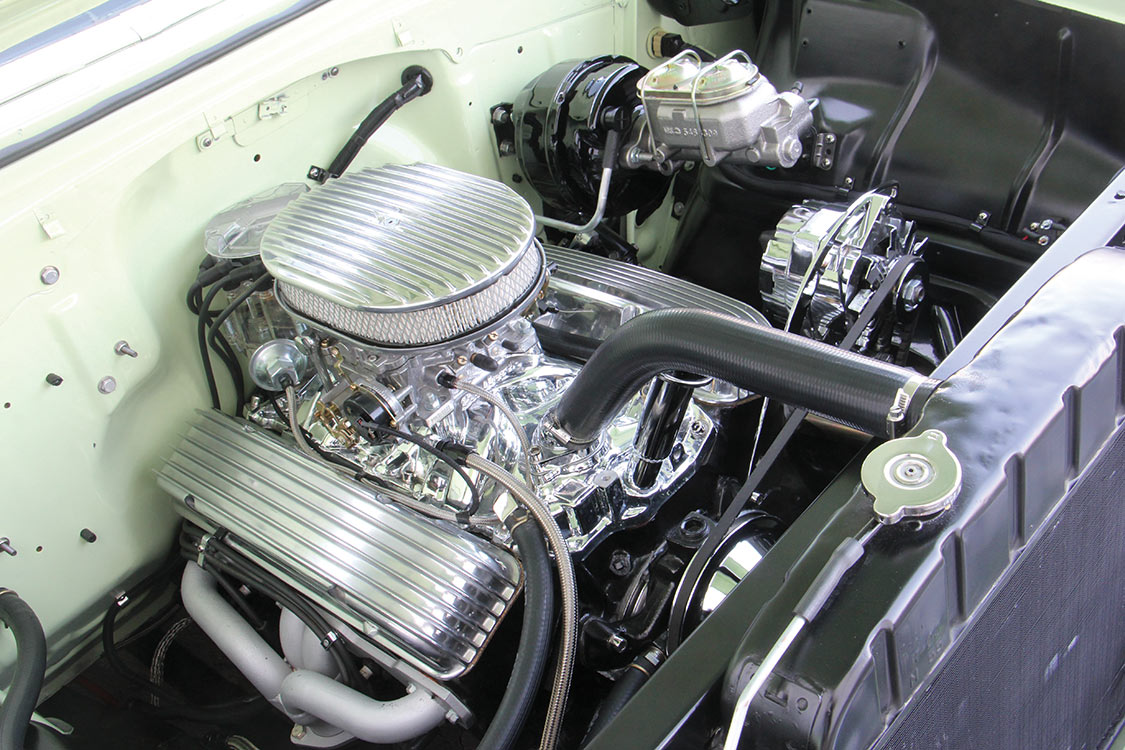

Under the hood, we discovered the original Chevy 265 ci engine that had been machined .30 over and equipped with quality performance internal components. To achieve better air/fuel mixture, an Edelbrock 1403 Performer 500 cfm 4-barrel square-bore, dual plane, Endura Shine Carburetor, was fitted with a Speedway Motors 12-inch oval, finned, polished, aluminum “Classic Nostalgia” air cleaner and paper, pleated filter. They were bolted atop an Edelbrock 27034 polished aluminum Intake Manifold with a chrome oil filler neck and filter breather cap.
Engine cooling was maintained by a GM water pump, the original GM radiator was boiled out, then relocated in front of the factory core support to achieve additional room. The ’56 factory core support was offered in two locations, one for the V8 and the other for the longer in-line six-cylinder. This allowed more room for the Spal electric fan.
The engine fuel and vacuum lines were braided stainless with quick release connectors. To deliver a constant electrical charge a GM 110 amp chrome alternator was used. The engines hot spark was created by an MSD Blaster ignition coil. An MSD HEI distributor delivered spark through a set of MSD 8.8mm black ignition wires.
To clean up the fire wall, the Optima Yellow Top battery was located and secured in the trunk. John was responsible for the immaculate electrical wiring, solid fuel lines and brake line plumbing. The factory pulleys were sent out and chromed, along with the timing chain cover. A pair of Cal Customs polished aluminum finned valve covers were purchased at the local Long Beach Swap Meet then stored in John’s garage rafters for 12 years before being pulled down and installed to finished off the engine.
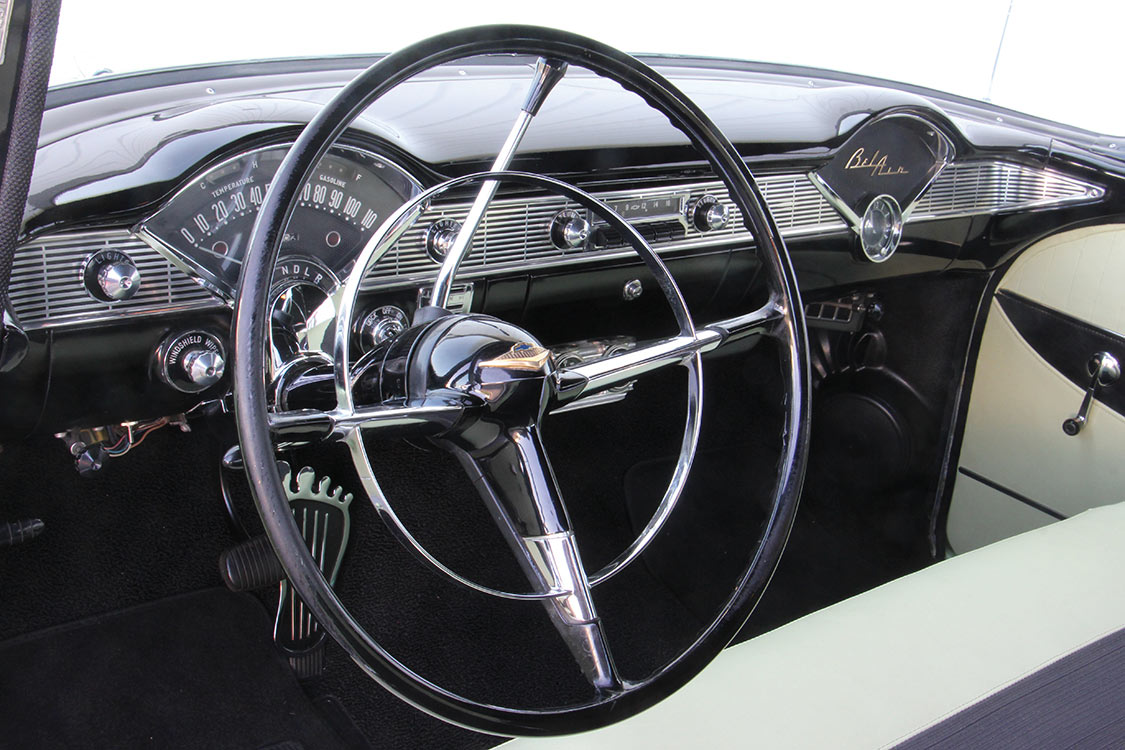
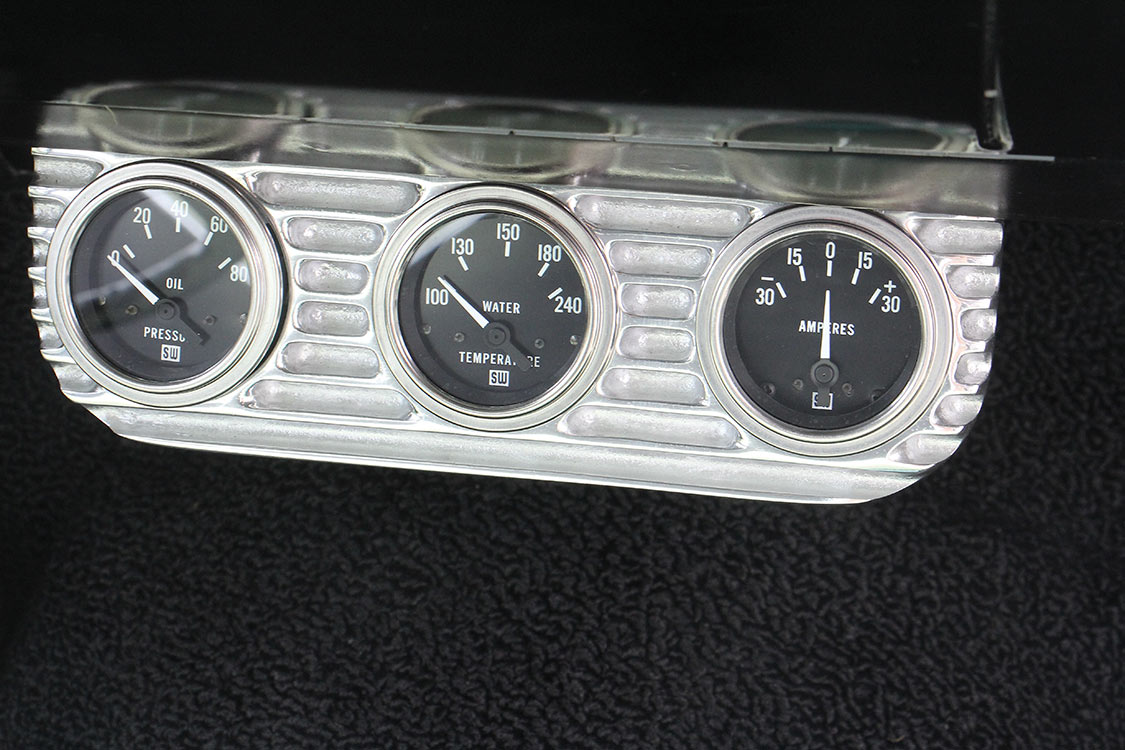
A pair of generic 2 1/2-inch diameter block hugger headers collected into the custom 2 1/2-inch diameter X-pipe exhaust flowed into a pair of Magnaflow off-set mufflers. A GM 700R4 4-speed automatic transmission was cooled by a frame mounted GM transmission cooler. The original ’56 driveshaft was removed and sent out to be shortened and balanced by O.C. Driveline in Placentia, California.
The stunning exterior two-tone colors were actually offered as the factory colors back in 1956. They were replicated again by Isaac Rosa and his crew at RC Empire Auto Body in Orange, California. When John purchased the car, the body was in good shape. Isaac did some minor body work before laying a couple of coats of sanding primer.
The car was then block sanded to ensure the entire surface was straight and smooth. To camouflage the four-door appearance, John shaved the back door handles. This gave an illusion that the back doors didn’t exist. Pro-Spray water base Crocus Yellow and Pro-Spray water base Black were used to achieve the factory two-tone paint scheme.
The front grille, turn indicators, headlights rings, bezels, hood ornament and badging were purchased from Danchuk Manufacturing. The original front bumper was traded at the local Long Beach Swap Meet for a re furbished chromed one. John’s determination to salvage the original rear bumper took hours of elbow grease and polishing to achieve its show-quality appearance. John also restored the original stainless body and window moldings. Fortunately all of the original glass was in immaculate condition.
As we opened the four doors of the Bel Air, we noticed the GM ’56 original interior with cloth/vinyl, black/yellow, two-tone seats covers, door panels, and headliner were salvaged and cleaned. The original carpet was replaced with new black carpet. The refurbished upholstery stitch craft was done by Martine Gurterez at T3 Custom Interiors in Orange, CA.
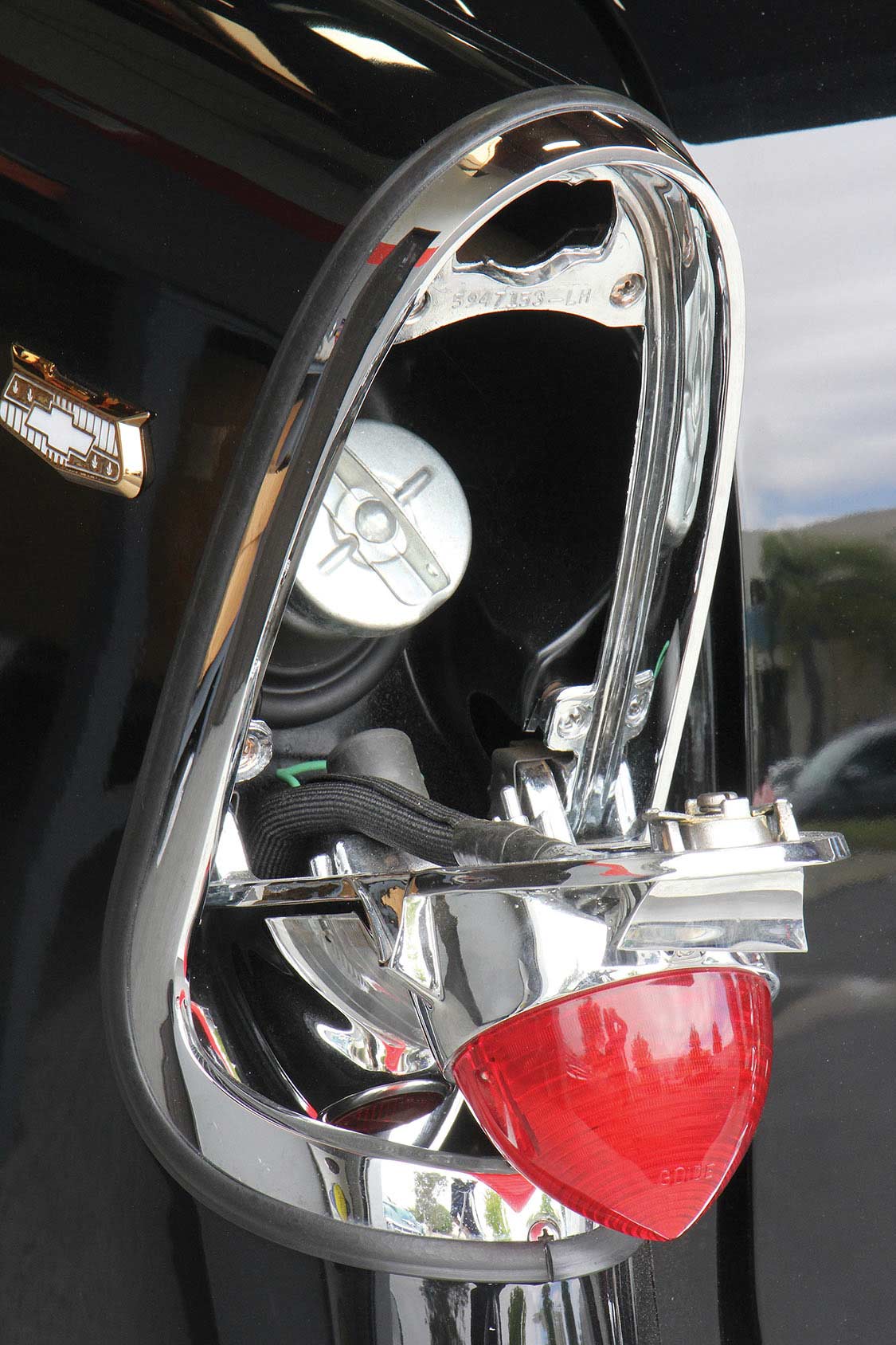
The original gauge cluster, gauges, AM radio, clock, dash speaker, dash grille and knobs were all cleaned and refurbished. A Mooneyes gauge panel was filled with Stewart Warner, oil pressure, water temp and volts, black face gauges were mounted in the center below the dash. The top half of the dash was the only part of the interior that was repainted gloss black. The original steering column and huge factory steering wheel were reconditioned and then repainted.
Opening the glove box, exposed the hidden Alpine CDE-143BT receiver with Bluetooth. A pair of 6-inch molded speakers panels were mounted in the front kick panels, while two 6×9-inch speakers were installed in the back seat package shelf.
John’s ’56 Bel Air four-door is a perfect example of how to think outside of the box. Sometimes going against the grain isn’t a bad idea. Who knows, classic 4-doors could be the next trend. He would like to thank his “Creative Consultant” and close friend, Chris Jonas, for his advice and assistance during the build. Also thanks go to Platinum Black and Cambra Speed Shop.
Editor’s Note: A version of this article first appeared in the March 2017 print issue of the Drive Magazine.